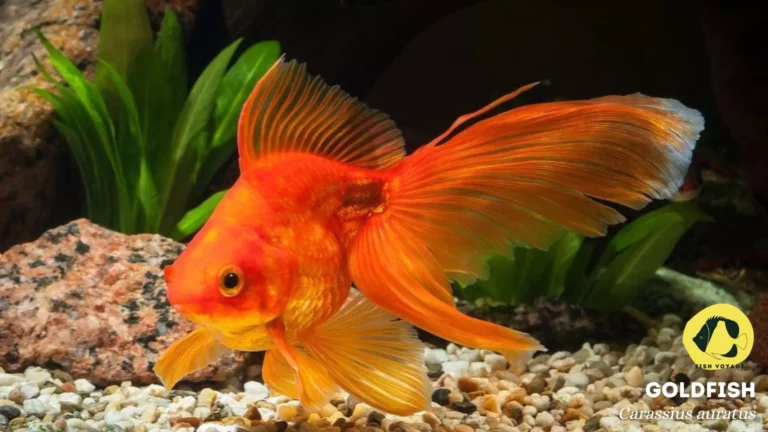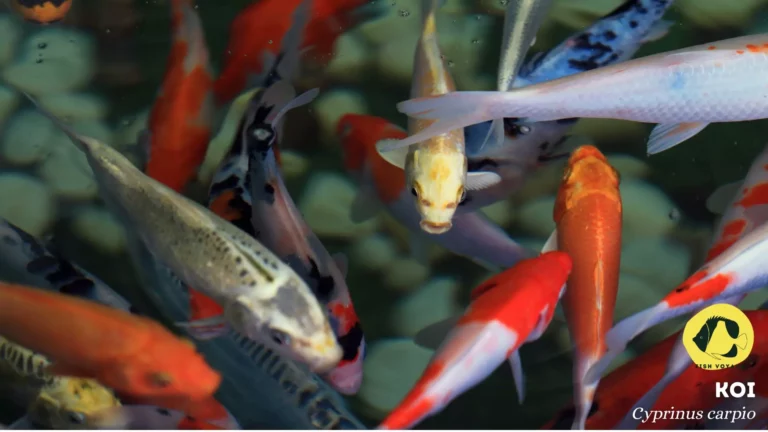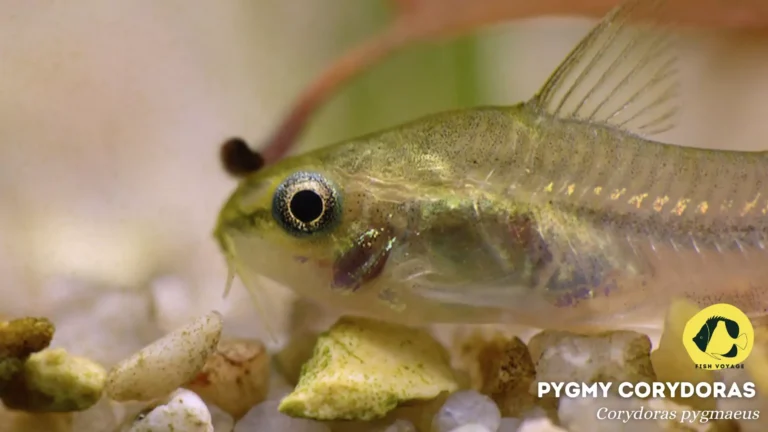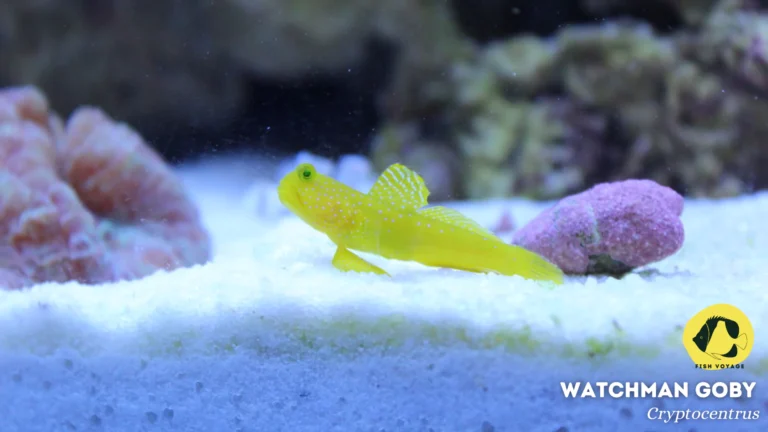The Guide to Pygmy Corydoras Water Parameters
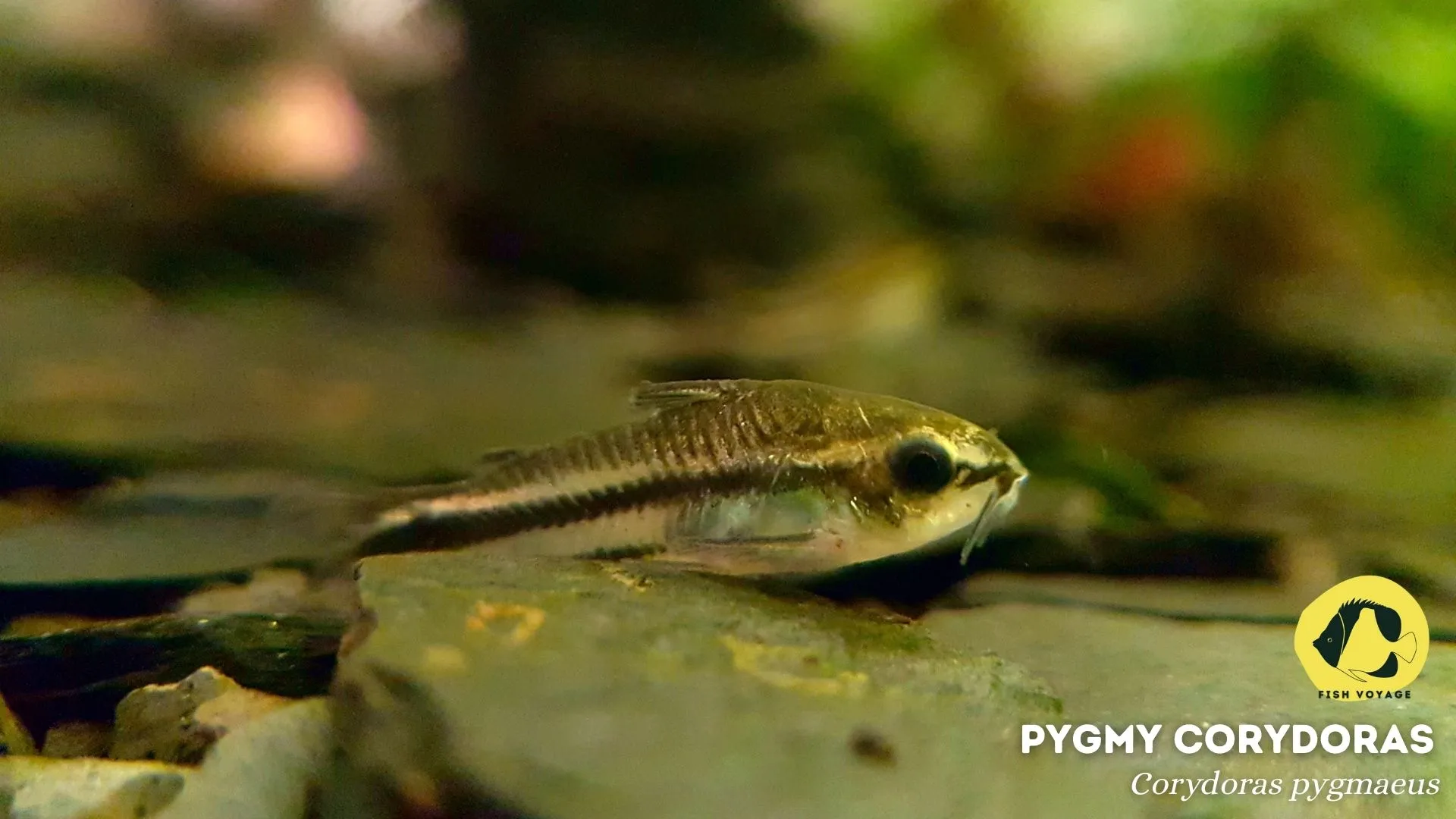
Welcome to the aquatic world of Pygmy Corydoras, charming and diminutive members of the aquarium community. Hailing from the South American waterways, these miniature catfish have captured the hearts of hobbyists with their playful demeanor and endearing appearance. As dedicated caretakers, it is our responsibility to provide them with an environment that mirrors their natural habitat. This blog post delves into the pivotal role of water parameters in the well-being of Pygmy Corydoras. Beyond the aesthetics of a pristine tank, understanding and maintaining ideal water conditions are paramount to ensuring the health, longevity, and vibrant behavior of these delightful aquatic companions.
Natural Habitat of Pygmy Corydoras
Native Environment
Pygmy Corydoras, native to the clear, slow-moving streams and tributaries of South America, are an enchanting species inhabiting the dense vegetation of the Amazon basin. In their natural habitat, these miniature catfish navigate through submerged branches and leaf litter, seeking shelter amidst the aquatic flora. Their small size and intricate patterns enable them to seamlessly blend into the mosaic of the riverbed.
Water Conditions in the Wild
In the pristine waters they call home, Pygmy Corydoras thrive in conditions characterized by a mild current, stable temperature, and soft, slightly acidic water. The natural habitat boasts temperatures ranging from 72 to 78°F (22 to 26°C), with a pH level hovering between 6.0 and 7.0. The substrate is often sandy or covered in leaf litter, contributing to the softness of the water and providing a comfortable environment for these delightful catfish.
Importance of Replicating These Conditions
Replicating the native conditions of Pygmy Corydoras is not merely an aesthetic choice but a crucial aspect of responsible aquarium care. These remarkable creatures have evolved to thrive in specific parameters, and recreating their natural environment is essential for their physical health and mental well-being. By understanding and mirroring the conditions they are accustomed to, aquarists play a vital role in promoting the natural behaviors and longevity of Pygmy Corydoras in captivity.
Key Water Parameters
Temperature
Optimal Temperature Range
Pygmy Corydoras thrive in aquariums with temperatures ranging between 72 and 78°F (22 to 26°C). Maintaining this range closely mimics their native environment and promotes their overall well-being.
Impact of Temperature on Pygmy Corydoras Health
Temperature plays a pivotal role in the metabolic rate, digestion, and immune function of these charming catfish. Consistently optimal temperatures contribute to their vitality, coloration, and reproductive success.
Tips for Maintaining Stable Temperatures
Invest in a reliable aquarium heater, regularly monitor water temperature, and position the aquarium away from drafts or direct sunlight. These measures ensure a stable and comfortable environment for Pygmy Corydoras.
pH Level
Ideal pH Range
Pygmy Corydoras thrive in slightly acidic to neutral conditions, with an ideal pH range between 6.0 and 7.0. Maintaining pH within this range promotes proper physiological functions and reduces stress.
Effects of pH on Pygmy Corydoras Behavior and Well-being
Fluctuations in pH can impact the availability of nutrients and affect the ion balance within the catfish. Consistent pH levels contribute to natural behaviors, robust health, and a more vibrant appearance.
Methods for Adjusting and Stabilizing pH
Natural methods like incorporating driftwood or almond leaves can help lower pH, while crushed coral or baking soda can raise it. Regular water testing and gradual adjustments ensure a stable and fish-friendly pH level.
Water Hardness (GH and KH)
Importance of GH and KH for Pygmy Corydoras
Pygmy Corydoras thrive in soft to moderately hard water. General hardness (GH) and carbonate hardness (KH) contribute to their physiological processes, including osmoregulation and proper scale development.
Suitable Levels and Potential Issues with Extremes
Maintain GH levels between 2 and 6 dGH and KH levels between 1 and 4 dKH. Extreme hardness levels can impact Pygmy Corydoras health, affecting their ability to regulate internal processes.
Techniques for Adjusting Water Hardness
Incorporate aquarium-safe buffers or use specialized substrates to influence water hardness. Regular water testing guides adjustments, ensuring an environment that mirrors their native habitat.
Ammonia, Nitrite, and Nitrate Levels
Explanation of the Nitrogen Cycle in Aquariums
Understanding the nitrogen cycle is crucial. Ammonia is converted to nitrite and then to nitrate by beneficial bacteria. Establishing and maintaining this cycle is vital for a healthy aquarium.
Safe Levels for Pygmy Corydoras
Keep ammonia and nitrite levels at zero, as these compounds are toxic to Pygmy Corydoras. Nitrate levels should be below 20 ppm to prevent long-term health issues.
Strategies for Maintaining Water Quality
Regular water changes, efficient filtration systems, and careful monitoring with test kits are essential for managing ammonia, nitrite, and nitrate levels. These practices contribute to a clean and thriving aquatic environment.
Aquarium Setup Tips
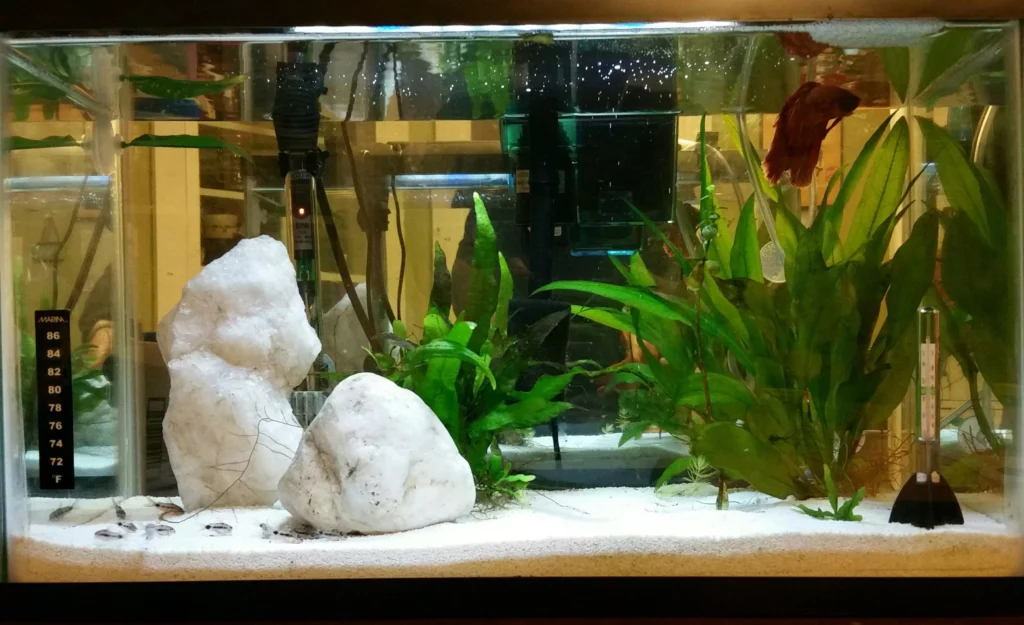
Importance of Proper Filtration
Ensuring Water Quality and Oxygenation
Proper filtration is the backbone of a successful Pygmy Corydoras habitat. A reliable filter not only removes debris and impurities but also promotes oxygen exchange, maintaining pristine water conditions crucial for the health of your aquatic companions.
Selecting an Appropriate Filter
Choose a filter with a moderate flow rate to avoid stressing Pygmy Corydoras. Canister or sponge filters work well, providing efficient mechanical and biological filtration without causing excessive water movement.
Substrate Choices for Pygmy Corydoras
Preferable Substrate Types
Selecting the right substrate is vital for replicating the natural environment of Pygmy Corydoras. A sandy substrate mimics their native riverbeds and is gentle on their delicate barbels. Fine gravel or specialized aquarium sand works best.
Avoiding Sharp or Coarse Substrates
Steer clear of rough or sharp substrates that could potentially injure the sensitive barbels of Pygmy Corydoras. A smooth, soft substrate ensures a comfortable and safe environment for these bottom-dwelling catfish.
Decorations and Hiding Spots
Creating a Natural-Looking Environment
Decorate the aquarium with driftwood, rocks, and live or artificial plants to replicate the natural Amazonian habitat of Pygmy Corydoras. These elements provide hiding spots, break lines of sight, and contribute to a visually appealing setup.
Incorporating Caves and Shelters
Pygmy Corydoras appreciates secluded spaces. Use caves, coconut shells, or commercial breeding shelters to offer secure hiding spots. This not only reduces stress but also encourages natural behaviors and breeding instincts.
Balancing Open Spaces with Coverage
While decorations provide hiding spots, ensure there are open spaces for swimming. Finding the right balance between sheltered areas and open swimming spaces caters to the natural behaviors and preferences of Pygmy Corydoras.
Monitoring and Regular Testing
The Significance of Routine Water Testing
Preserving the Aquatic Ecosystem
Routine water testing is the cornerstone of responsible Pygmy Corydoras care. It enables aquarists to proactively monitor key parameters, ensuring a stable and thriving aquatic ecosystem. By identifying any deviations from optimal conditions, you can address potential issues before they impact the health of your aquatic companions.
Early Detection of Imbalances
Regular testing allows for the early detection of imbalances in temperature, pH, and water chemistry. This proactive approach helps prevent stress-related health issues, ensuring a harmonious environment for Pygmy Corydoras.
Recommended Testing Kits
Versatile Water Testing Kits
Investing in reliable water testing kits is paramount for accurate assessments. Versatile kits that cover essential parameters such as pH, ammonia, nitrite, nitrate, GH, and KH are recommended. Brands like API, Nutrafin, and Tetra offer comprehensive testing solutions widely trusted in the aquarium community.
Consistency and Accuracy
Choose testing kits known for their consistency and accuracy. Regularly replace reagents and follow the manufacturer’s instructions diligently to ensure precise readings. Consistent testing schedules contribute to a proactive and well-informed approach to aquarium maintenance.
How to Interpret Test Results and Take Corrective Actions
Understanding Parameter Ranges
Interpreting test results requires familiarity with the ideal parameter ranges for Pygmy Corydoras. Establish a baseline for each parameter and be vigilant for any deviations. Consult reputable resources or seek advice from experienced aquarists to refine your understanding.
Taking Corrective Actions
In the event of parameter deviations, take targeted corrective actions. For example, if ammonia or nitrite levels rise, perform immediate water changes and assess the filtration system. If pH swings occur, implement gradual adjustments using aquarium-safe methods like driftwood or additives, ensuring minimal stress on your Pygmy Corydoras.
Regular Monitoring and Adjustment
Develop a routine for monitoring and adjustment based on test results. Regular water changes, substrate maintenance, and equipment checks contribute to a proactive strategy. By consistently addressing issues as they arise, you promote a stable and optimal environment for Pygmy Corydoras, fostering their well-being and natural behaviors.
Common Issues and Troubleshooting
Identifying Signs of Stress or Illness
Observation and Behavioral Changes
Careful observation of Pygmy Corydoras is key to detecting signs of stress or illness. Watch for changes in behavior, such as reduced activity, erratic swimming, or hiding. Abnormalities like frayed fins, discoloration, or lesions may indicate underlying health issues.
Appetite and Respiratory Patterns
Monitor feeding habits and respiratory patterns. A sudden loss of appetite, excessive gasping at the water’s surface, or rapid gill movement could signal distress. Regular, unhurried respiration is indicative of a healthy Pygmy Corydoras.
Quick Fixes for Common Water Parameter Problems
Ammonia and Nitrite Spikes
In the event of ammonia or nitrite spikes, perform immediate partial water changes to dilute the toxic substances. Check filtration efficiency, ensuring the biological filter is functioning optimally. Avoid overfeeding, as excess uneaten food contributes to these spikes.
pH Fluctuations
For pH fluctuations, implement gradual adjustments using pH buffers or natural methods like driftwood. Sudden changes in pH can stress Pygmy Corydoras, so aim for stability and avoid rapid corrections.
Temperature Variations
Maintain stable temperatures to prevent stress. If faced with temperature variations, consider adjusting the thermostat on the aquarium heater and insulating the tank to minimize external influences.
When to Seek Professional Advice
Persistent Health Issues
If Pygmy Corydoras exhibit persistent health issues despite your efforts, it’s advisable to seek professional advice. Consult with a knowledgeable veterinarian specializing in aquatic species or reach out to experienced aquarists through reputable forums or local aquarium clubs.
Complex Water Parameter Challenges
If water parameter challenges become complex or difficult to manage, professional assistance may be necessary. A qualified aquarium specialist can conduct in-depth water analysis, identify underlying issues, and recommend targeted solutions for the well-being of Pygmy Corydoras.
Behavioral Abnormalities
Unexplained behavioral abnormalities, sudden deaths, or outbreaks of disease may warrant professional intervention. Prompt action and expert guidance can help identify and address potential issues before they escalate, safeguarding the overall health of your aquarium.
Conclusion
In closing, the journey into the intricacies of Pygmy Corydoras care underscores the significance of maintaining optimal water parameters. From the nuances of temperature and pH to the critical balance of water hardness and the delicate dance of nitrogen cycle management, each element contributes to the well-being of these captivating aquatic companions. Our exploration has highlighted the importance of a well-thought-out aquarium setup, regular monitoring, and prompt troubleshooting to ensure a thriving environment for Pygmy Corydoras.
The delicate dance of water parameters is not merely a technical aspect of aquarium maintenance but a profound responsibility to the welfare of our Pygmy Corydoras. The ability to replicate their native environment fosters natural behaviors, vibrant coloration, and overall health. As stewards of these miniature catfish, we hold the key to creating a haven that mirrors the South American waterways they call home. By understanding and meticulously managing temperature, pH, water hardness, and other critical parameters, we contribute to the longevity and happiness of our aquatic companions, ensuring a fulfilling and enriching experience for both them and us as enthusiasts.
Additional Resources
Links to Reliable Forums for Further Discussion
Aquarium Enthusiast Forums
For ongoing discussions and insights into Pygmy Corydoras care, consider joining reputable aquarium enthusiast forums. Communities such as AquariumAdvice and Fishlore provide platforms for sharing experiences, troubleshooting challenges, and connecting with seasoned aquarists. Engaging in these forums opens doors to a wealth of collective knowledge, ensuring a supportive network throughout your Pygmy Corydoras journey.
Reddit Communities
Explore dedicated subreddits like r/Aquariums and r/AquariumHub for real-time discussions, user-generated content, and expert advice. These active online communities offer a space to seek guidance, share your experiences, and stay updated on the latest advancements in aquarium care.
Recommended Products
Water Testing Kits
Investing in reliable water testing kits is crucial for maintaining optimal conditions. Brands like API offer comprehensive kits covering pH, ammonia, nitrite, nitrate, GH, and KH. These kits ensure accurate assessments, allowing you to make informed decisions for the well-being of your Pygmy Corydoras.
Quality Filtration Systems
Consider reputable filtration systems such as Fluval to maintain pristine water quality. Efficient mechanical and biological filtration is essential for the removal of impurities and the establishment of a healthy nitrogen cycle, contributing to the overall vitality of your aquarium.
Aquarium Heaters
Reliable aquarium heaters from brands like Aqueon play a crucial role in maintaining stable temperatures. These devices ensure the comfort of Pygmy Corydoras, promoting natural behaviors and supporting their physiological functions.
Water Conditioners and Additives
Aquarium-safe water conditioners and additives are instrumental in adjusting parameters. Products like API Stress Coat assist in neutralizing harmful substances, reducing stress, and promoting a more hospitable environment for Pygmy Corydoras.
Frequently Asked Questions (FAQs)
1. What is the optimal temperature range for Pygmy Corydoras in an aquarium?
The optimal temperature range for Pygmy Corydoras is between 72 and 78°F (22 to 26°C). Maintaining temperatures within this range closely mimics their native environment, promoting their overall health and well-being.
2. How important is pH for Pygmy Corydoras, and what is the ideal pH range?
pH is crucial for Pygmy Corydoras as it affects their behavior and physiological functions. The ideal pH range is between 6.0 and 7.0. Fluctuations outside this range can lead to stress and health issues, so it’s essential to maintain stability.
3. Why is water hardness important for Pygmy Corydoras, and what are suitable levels?
Water hardness (GH and KH) is vital for Pygmy Corydoras’ well-being, influencing processes like osmoregulation. Maintain GH levels between 2 and 6 dGH and KH levels between 1 and 4 dKH. Extreme hardness levels can impact their health, so strive for a balance.
4. How do I address ammonia and nitrite spikes in my Pygmy Corydoras aquarium?
Immediate partial water changes are crucial to dilute toxic substances during ammonia or nitrite spikes. Check filtration efficiency and avoid overfeeding. Consistent monitoring and proper maintenance contribute to preventing these spikes.
5. When should I seek professional advice for Pygmy Corydoras water parameter issues?
If Pygmy Corydoras exhibit persistent health issues, behavioral abnormalities, or if water parameter challenges become complex, seeking professional advice is recommended. Consult with a knowledgeable veterinarian or experienced aquarists for in-depth analysis and targeted solutions.


